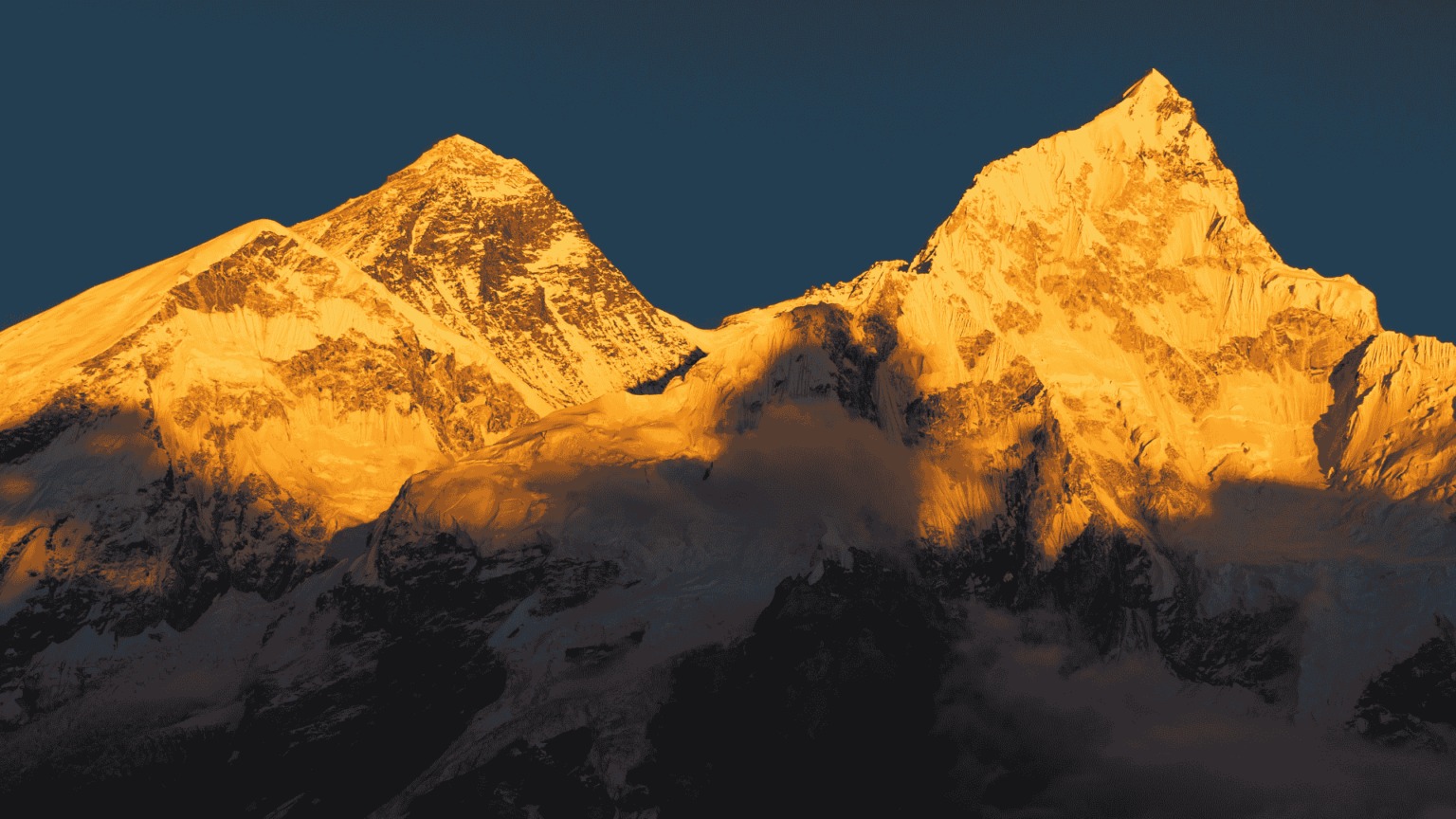Kala Patthar is the best viewpoint of Mount Everest with cultural immersion and natural beauty. Located at an altitude of 5,643 meters, Kala Patthar meaning “black rock” in Nepali offers a surreal close-up view of Everest’s grandeur along with other towering Himalayan peaks. Here, we’ll explore why Kala Patthar stands as the ultimate destination for trekkers, nature enthusiasts, and culture-seekers alike.

Why Kala Patthar is the Best Viewpoint of Mt. Everest
Kala Patthar’s Vantage Point
Kala Patthar’s elevation and location make it the most celebrated viewpoint for Everest, surpassing even Everest Base Camp (EBC) in the quality of views. Surprisingly, Everest Base Camp doesn’t provide direct views of the Everest summit due to the surrounding peaks. Kala Patthar, on the other hand, offers an unobstructed panorama of Everest’s majestic south face, flanked by prominent peaks like Lhotse, Nuptse, and Pumori.
Adding Kala Patthar to the Everest Base Camp Trek
Often considered an essential add-on to the Everest Base Camp trek, Kala Patthar offers trekkers a chance to capture the most iconic Himalayan vistas without needing a mountaineering permit. The climb is relatively short but rigorous, culminating in views that define the spirit of Everest trekking.
Trekking Through Sagarmatha National Park
A UNESCO World Heritage Site
The trek to Kala Patthar begins from Lukla, passing through Sagarmatha National Park, a UNESCO World Heritage site renowned for its biodiversity and unique Himalayan ecosystem. Covering an area of over 1,148 square kilometres, this park is home to some of the world’s rarest wildlife species, including the snow leopard, red panda, and Himalayan tahr. Trekkers often spot colourful pheasants, eagles, and elusive Himalayan wolves along the trail.
Flora and Fauna in Sagarmatha National Park
The varied terrain of Sagarmatha National Park includes lush rhododendron forests, alpine meadows, and sub-alpine zones that support a wealth of plant life. The park’s rugged environment houses rare flora like blue poppies and juniper and fauna adapted to extreme altitudes, contributing to the mystical allure of the journey.
Immersing in Sherpa Culture
Meeting the Sherpa People
The trek to Kala Patthar is also a cultural journey through the Khumbu region, home to the Sherpa people. Known for their mountaineering expertise and unmatched resilience, the Sherpas have a rich heritage intertwined with the Himalayas. Many trekkers stop at villages like Namche Bazaar and Tengboche to experience Sherpa hospitality, learn about their spiritual beliefs, and appreciate their historic connection to Everest.
Visiting Monasteries and Religious Sites
The spiritual side of the trek is equally rewarding. Stops at iconic monasteries, such as the Tengboche Monastery, offer a glimpse into the Buddhist traditions that are integral to Sherpa culture. With prayer flags fluttering and the scent of juniper incense in the air, these sacred spaces bring a profound sense of peace amidst the mountains.
The Trekking Experience: Trails, Views, and Landmarks
Challenging Yet Rewarding Trails
Reaching Kala Patthar requires a significant amount of stamina and determination. The trek spans approximately 12 days, starting from Lukla and passing through steep mountain paths, dense forests, and suspension bridges that cross glacial rivers. It’s not just the destination but also the journey that makes Kala Patthar a once-in-a-lifetime experience, where each step reveals spectacular views of the Everest massif.
Panoramic Views Beyond Everest
While Everest is undoubtedly the star attraction, Kala Patthar provides sweeping vistas of other notable peaks. From here, trekkers can see Mount Lhotse (8,516m), the fourth-highest peak, and Mount Makalu (8,485m), the fifth-highest. The view also includes Mount Pumori, which looms close to Kala Patthar and adds depth to the landscape.
A Spiritual and Emotional Climb
The trek to Kala Patthar is both physically demanding and emotionally moving. As trekkers ascend the final stretch before dawn to witness the sunrise over Everest, there is an unparalleled sense of achievement. The sight of Everest bathed in golden hues against the deep blue sky is a memory etched forever in every trekker’s mind.
Reasons Why Kala Patthar is the Ultimate Everest Viewpoint
Beyond Just a Viewpoint
Viewpoints are meant to offer scenic views, yet Kala Patthar is more than just a photogenic spot. It’s a sacred ground where trekkers connect deeply with the mountains and the landscapes. The journey to Kala Patthar tests the endurance and will of every trekker, making the final view of Everest a reward in itself.
Symbolism of Kala Patthar
For many trekkers, Kala Patthar embodies the spirit of adventure, resilience, and reverence for nature. Its literal meaning, “black stone,” reflects the rugged terrain and the formidable spirit required to conquer it. For this reason, Kala Patthar has become a pilgrimage for those seeking not only views but a transformative experience.
FAQs
What makes Kala Patthar the best viewpoint of Everest?
Kala Patthar offers an unobstructed view of Mount Everest and surrounding peaks like Lhotse, Nuptse, and Pumori. Its location provides a close, direct view of Everest, unlike Everest Base Camp, which lacks visibility of the Everest summit due to surrounding mountains.
How challenging is the Kala Patthar trek?
While the Kala Patthar trek is an add-on to the Everest Base Camp trek, it is still quite strenuous, especially with the high altitude and early morning ascent. However, it requires no special mountaineering permits, making it accessible to seasoned trekkers with determination.
How long does it take to trek to Kala Patthar?
The round-trip trek to Kala Patthar, starting from Lukla, typically takes about 12 days. This includes acclimatization days, which are essential to reduce the risk of altitude sickness.
Is it possible to see wildlife during the Kala Patthar trek?
Yes, Sagarmatha National Park, through which the Kala Patthar trek passes, is home to rare wildlife species such as snow leopards, Himalayan tahrs, red pandas, and various alpine birds. Trekkers often spot these animals along the trail.
What cultural experiences can I expect during the Kala Patthar trek?
Trekkers can immerse themselves in Sherpa culture by visiting monasteries, interacting with locals, and experiencing the Sherpa way of life. Stops in villages like Namche Bazaar allow visitors to see Sherpa’s hospitality and spiritual practices firsthand.
When is the best time to trek to Kala Patthar?
The best times to trek to Kala Patthar are during the pre-monsoon season (March to May) and post-monsoon season (September to November), when the weather is clear and the views of Everest are unobstructed.
Kala Patthar is a journey of self discovery, a testament to human endurance, and an unparalleled gateway to Everest and the surrounding peaks. From the cultural richness of the Sherpa communities to the pristine wilderness of Sagarmatha National Park, the trek to Kala Patthar offers a complete Himalayan experience. The breathtaking views, the sense of adventure, and the chance to connect deeply with Everest make Kala Patthar the most remarkable viewpoint in the Himalayas.
